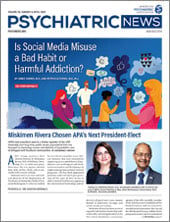The ebb and flow of societal beliefs often resemble a pendulum’s swing, oscillating between acceptance and rejection. This phenomenon is not confined to the annals of history but is evident in contemporary debates, such as the one surrounding psychedelics.
Historically, what was once deemed abhorrent, a vice, gradually became acceptable, desirable, and, eventually, a virtue. “Virtuous” peaks are commonly followed by declines and, eventually, flat-out rejection as moral failings. Consider the changing attitudes toward individualism versus collectivism or the dominance of reason versus emotion in different cultures and epochs.
This “pendulum effect” isn’t just a historical pattern. In medicine, the nature-nurture debate has swung between biological and environmental models of disease. Psychiatry’s pendulum has traveled back and forth between the psychological and biological determinants of mental illness. These dichotomies, while oversimplified, often guide public perception as if they were mutually exclusive truths.
Science faces the constant challenge of dispelling the illusion that pendulum swings result from a cumulative body of empirically validated data. This is a dangerous illusion, as in reality, pendulum trajectories are driven by acceptance and rejection, the right and the wrong, as opposed to a data-driven valid/invalid perspective. Belief-based pendulum trajectories of beliefs commonly reflect a majority-view, socioculturally filtered interpretation of evidence.
While it is difficult to take off our socio-culturally colored glasses, the awareness of such filters should be reason enough, when it comes to rapidly swinging belief-driven pendulums, to take a step back; aim to slow down a pendulum moving at high speed; and critically examine not the beliefs, but the evidence.
Would such a perspective help better understand the contemporary, rapidly “swinging up” movement of psychedelics’ benefits?
Psychedelics have been used by humans for thousands of years. For most of this time, the use of these powerful substances has been limited by strict rules and clearly defined, usually initiatory and spiritual goals. In the 1960s, this traditionally restricted view of the use of psychedelics changed to a culturally driven push for wider acceptance. While this change initially rested on data indicating that these substances had transformative mental effects, by the mid-1960s, it is not the research but the psychedelics’ popularity with the flower-power counterculture movement that propelled these substances into the limelight. Later, another cultural perspective—concerns about high-profile incidents rather than purely scientific data—led to the relatively sudden demonization of psychedelics as “brain-frying,” harmful substances.
The last decade has seen a reemergence of interest in these molecules’ therapeutic potential. While our current understanding of psychedelics is mostly data driven, in the last couple of years, articles on psychedelics have been a regular feature of several mainstream newspapers and magazines, indicating a resurgence in public interest, supported, in major part, by a cultural shift toward a general acceptance and legalization of priorly deemed toxic substances.
Where are we now? As a clinician and clinical researcher, I hold the “first do not harm” principle as the most important value informing my practice. As such, I found the preclinical data mapping psychedelic-induced neuroplasticity and neuroregeneration invaluable in helping me better understand the risk/benefit of these interventions. I am less enthusiastic about the human studies testing the potential clinical uses of psilocybin and LSD.
To illustrate some of my concerns, let me propose a thought experiment. Consider any of the psychedelic clinical trials recently published by The Lancet, JAMA Psychiatry, or The New England Journal of Medicine. Edit the text to replace the active substance (psilocybin/LSD/psychedelic drug) with “drug x”. Read the edited “drug x” paper, a paper reporting on a “drug x” effect on a given outcome of interest: depression/PTSD/studied clinical indication. Finally, on a scale of 1 to 10, rate your confidence about your “drug x” clinical trial likelihood for publication by a first-tier medical journal. For me, this thought experiment results in pretty low confidence rates, which in turn, accurately reflects my view of the strength of evidence underlying this psychedelic revival.
My reading of the recently completed psychedelics clinical trials is that there is a lot of hope, which is good, and there is also a lot of hype, which is not good. The fact is that we are seeing a rapidly building momentum.
Consider this: On the one hand, this momentum, when carefully managed, could speed up the rate of discovery. On the other hand, strong momentum could be destabilizing to the point of swiftly running into the ground a fragile and far from established body of knowledge.
What can we do? In future editorials, we will focus on potential solutions: ways to ensure that we maintain the momentum while avoiding the temptations and danger of a high-speed chase. ■

